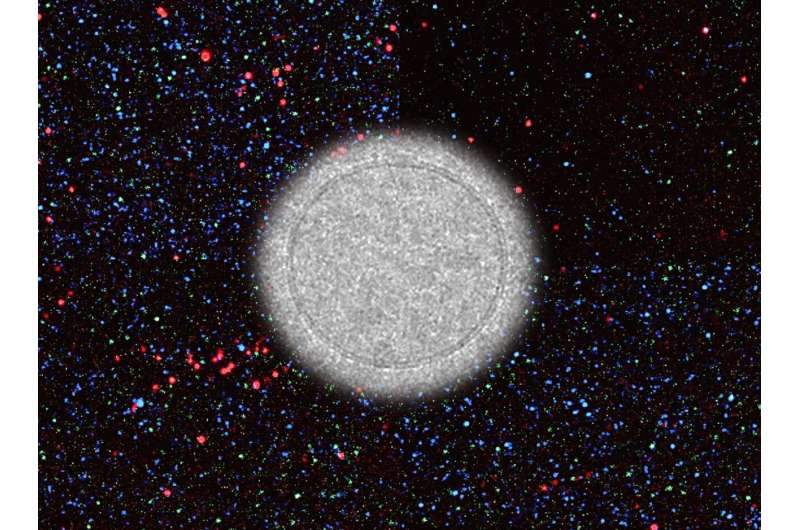This article has been reviewed according to Science X's editorial process and policies. Editors have highlighted the following attributes while ensuring the content's credibility:
fact-checked
peer-reviewed publication
trusted source
proofread
Previously unidentified proteins suggest new way to diagnose ovarian cancer

A study led by Nagoya University in Japan has identified three previously unknown membrane proteins in ovarian cancer. Using a unique technology consisting of nanowires with a polyketone coating, the group succeeded in capturing the proteins, demonstrating a new detection method for identification of ovarian cancer. The study is published in the journal Science Advances.
The discovery of new biomarkers is important for detecting ovarian cancer, as the disease is difficult to detect in its early stages where it can most easily be treated. One approach to detecting cancer is to look for extracellular vesicles (EVs), especially small proteins released from the tumor called exosomes. As these proteins are found outside the cancer cell, they can be isolated from body fluids, such as blood, urine, and saliva. However, the use of these biomarkers is hindered by the lack of reliable ones for the detection of ovarian cancer.
A research group led by Akira Yokoi of the Nagoya University Graduate School of Medicine and Mayu Ukai at the Institute for Advanced Research extracted both small and medium/large EVs from high-grade serous carcinoma (HGSC), the most common type of ovarian cancer, and analyzed them using liquid chromatography-mass spectrometry to analyze the proteins.
Initially their research was challenging. "The validation steps for the identified proteins were tough because we had to try a lot of antibodies before we found a good target," said Yokoi. "As a result, it became clear that the small and medium/large EVs are loaded with clearly different molecules. Further investigation revealed that small EVs are more suitable biomarkers than the medium and large type. We identified the membrane proteins FRα, Claudin-3, and TACSTD2 in the small EVs associated with HGSC."
Now that the group had identified the proteins, they investigated whether they could capture EVs in a way that would allow for the identification of the presence of cancer. To do this, they turned to nanowire specialist Takao Yasui of the Graduate School of Engineering at Nagoya University who combined his research with that of Dr. Inokuma at the Japan Science and Technology Agency to create polyketone chain-coated nanowires (pNWs). This technology was ideal for separating exosomes from blood samples.
"pNW creation was tough," Yokoi said. "We must have tried three or four different coatings on the nanowires. Although polyketones are a completely new material to use to coat this type of nanowire, in the end, they were such a good fit."
"Our findings showed that each of the three identified proteins is useful as a biomarker for HGSCs," said Yokoi. "The results of this research suggest that these diagnostic biomarkers can be used as predictive markers for specific therapies. Our results allow doctors to optimize their therapeutic strategy for ovarian cancer, therefore, they may be useful for realizing personalized medicine."
More information: Akira Yokoi et al, Identifying high-grade serous ovarian carcinoma-specific extracellular vesicles by polyketone-coated nanowires, Science Advances (2023). DOI: 10.1126/sciadv.ade6958. www.science.org/doi/10.1126/sciadv.ade6958


















